This 9 x 7.5 cm notebook is bound in black leather with the border blind embossed: the hinge of the brass clasp is missing. The pages are not yellow edged. The front of the notebook has a 6 x 3 cm label of cream-coloured paper with 'Sydney Mauritius' written in ink and 'LT[V] 15' in pencil.
There are 100 pages in the notebook, the text is written in two sequences. One covering 92 pages from the front cover, the other 8 pages from the back cover. The notebook covers dates from 12 January to 30 April 1836.
[front cover]
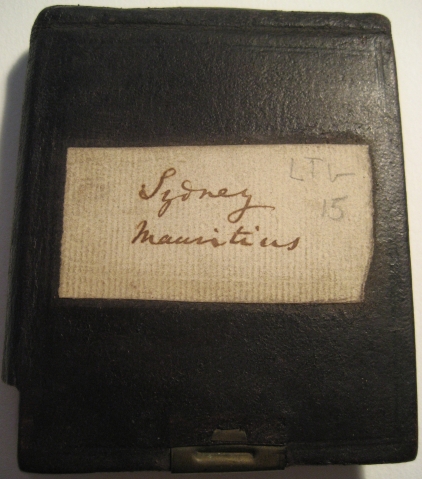
Sydney
Mauritius
LT[V] 15
[inside front cover]
Bathurst 2232
Waimate
Dr Jennerett1 Rtt St
Quamby [Bluff]
1 Henry Jeanneret (1802-86), surgeon, dentist and amateur botanist in Hobart Town, Tasmania.
[page 1a]
16.th = Saturday [January 1836]
Left Sydney — soon entered country — excellent roads, turnpike: Pothouses
too much wood land —
Some fine trees, all peculiar — rails instead of Hedges: many Carts Gigs — Phaetons & Horses [from] garrison soldiers
[page 2a]
Lunched. nice little Public House. — pleasant distinction of Ranks —
Napoleon & Dan -O'connel1
Rode on to Emu ferry on the Nepean: a broard river still as a pool, small body of running water. —
Poor pasture land; but
1 Daniel O'Connell (1775-1847), Irish statesman.
[page 3a]
here & there Farm Houses: on the Nepean pretty scene, escarpment of Blue mountains, contemptible edge of great plain. cultivated land: Party of black men, beautiful precision in throwing darts: speak English — Merry
[page 4a]
fellows: distance about 100 yds Caps at about 30 — curious throwing stick: painted white (like Fuegians) going to fight some other people: not nearly so degraded a set, as I expected, all clothed: Prisoners constable & soldiers Sandstone: frequently many Laminated Shale beds at top of Clays with
[page 5a]
much Clay Iron Stone Slight irregularities in the stratification:
Sandstone generally moderately hard; thinly stratified, on coast dip inwards — near the Nepean first meet pebbles of [illeg] Granitic Trappean rock & [siliceous] Sandstones
[page 6a]
Appears to descend to valley by steps: plain at base composed of fine Alluvial [strongly] sandy soil stratified, lying on a coarse conglomerate of above pebbles; great Escarpement of Blue Mountains
Black men, see marks of Oppossum's feet. —
chief food: no home: —
[page 7a]
Sunday 17th — [January 1836] Started 6 oclock — ferry. ascent of Blue Mountains. great fine woods. —
Then plain, uneven, many valleys; gradually rises great deception, when the elevation is considered of nearly 3000 ft —
[Barren] woods: poles — pale & peculiar green
[page 8a]
Singularly uniform tint, in bushes the vertical leaves singular effect: pretty birds, magnificent parrots: baited at the Weatherboard;1 walked mile & ½ to see Cascade: most magnificent. astounding & unique view, small valley not lead to expect such scene: rill of water,
1 'In the middle of the day we baited our horses at a little Inn, called the Weather-board.' Beagle diary, p. 309.
[page 9a]
[illeg] fluttering: semicircular; cliff white or reddish, so vertical that pitch a stone over perhaps 800 ft, quartz wall, about 2000 ft, grand valley, sea of forest; necessary to go 16 miles to reach base of fall
[page 10a]
certainly most stupendous cliffs I have ever seen, some stand in middle like Island.— Stratum 3000 ft thick cracked, cracks enlarged —
Rode on to Gardners;1 occasionally glimpse of part of same valley
1 Andrew Gardner, a Scottish ex-soldier and ex-convict who established the Scotch Thistle Inn (1831), later Blackheath Inn.
[page 11a]
called Clwyd from the wooded plain, could not see the bottom;Reached Black Heath, comfortable as Welsh Inn, old Soldier — 15 beds, in a barren mountain 70 60 miles from Sydney:1 Waggon with Wool. Bullocks —
1 'The Blackheath is a very comfortable inn, kept by an old Soldier; it reminded me of the small inns in North Wales.' Beagle diary, p. 401.
[page 12a]
owing to deposition from thickness of strata: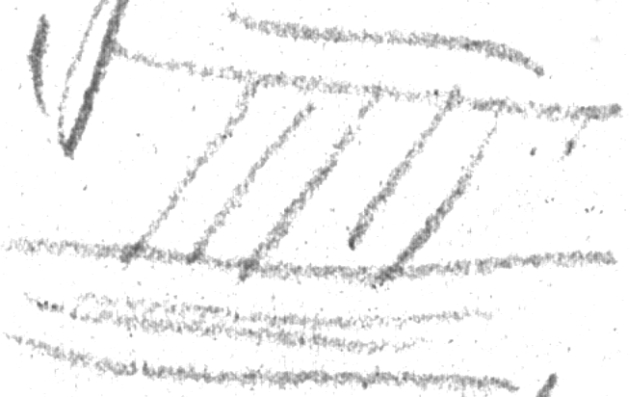
Thin structure excessively common, all the planes well developed, dip to various points:
[page 13a]
On a grand scale as seen from Cascade Horizontal strata & Sandstone grains of quartz & much ferruginous matter, plates, hollow balls, & Claystone Iron — line of small Quartz pebbles; rare at edge of Blue Mountains, common
[page 14a]
at Cascade & even Inch long [as before] Blackheath: At edge of B. Mountains in Sandstone, patch of Shale 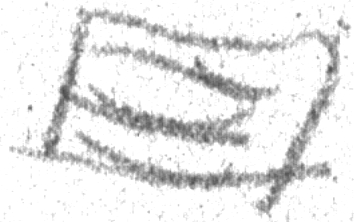 like Mica Slate in Gneiss at Rio —
like Mica Slate in Gneiss at Rio —
Grand Sandstone planes slopes to East,
[page 15a]
valleys, most extraordinary
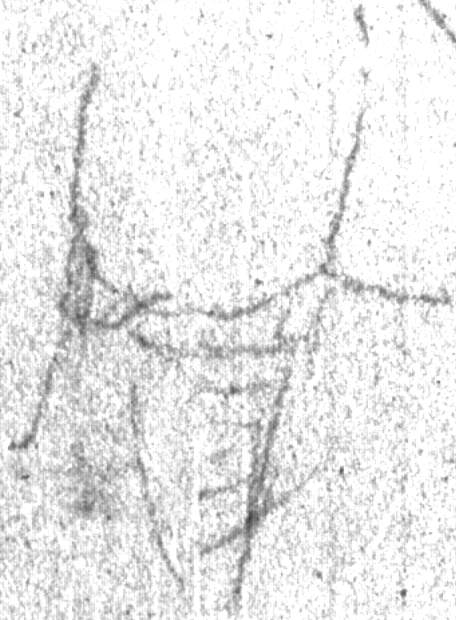 heads like arm of sea, appears quite out of proportion to little streams in great fissures cleared by the sea — It is an immense Sandstone formation: —
heads like arm of sea, appears quite out of proportion to little streams in great fissures cleared by the sea — It is an immense Sandstone formation: —
[page 16a]
Monday 18th [January 1836] — Early in morning went to East side about 2 & ½ miles to Govetts Leap — the same absolute ┴º precipices in form of cones not affected by streams; horizontal strata; grand valley full of blue mist from rising sun:
Descended Mt Victory; an extraordinary undertaking. —
Old soldier of Blackheath who had travelled1 account of the women:
1 Possibly Andrew Gardner.
[page 17a]
Mr Browne1 men, very sensitive Scotchman, bad account of men, not reformation, or punishment, not happy but do not quarrel, excepting when drunk, — quite impossible to reform. — In Vale of Clwyd — Granite 2500 ft country improves, trees park like scattered, then covering of pasture, green
1 Andrew Brown(e), farmer and superintendent of Wallerawang. See Nicholas and Nicholas 1989, pp. 44-5 and Beagle diary, p. 401. Darwin carried a letter of introduction from the owner, James Walker.
[page 18a]
Sheep-down; whole country one aspect: white Coccatoos & Crows: wild dogs tamed: copulate freely: Mr Brownes farm, fine wheat fields harvest time just concluded 7000 sheep shearing — harvest, possess 15000 — 80 convicts; no women — miserable although from scene ought to be happy. —
[page 19a]
Sydney — poor country; to be improved but limited: no Canals or rivers — not comparable to N. America:
M. Victoria Sandstone, with thin lines of quartz pebbles; some even inch long — ferruginous plates Quartz (Feldspar? & Mica decomposed?) Some shaly red marl, white soft aluminous
[page 20a]
fine grained Sandstone: In whole great plain no pebbles of Granite; hence no debacles, any small ones would be decomposed:
Vale of Clwyd Granite porph. with large Crysts: of Feldspar.
concentric structure (scenery hills surmounted by balls) 3 or 4 large dykes
[page 21a]
of decomposing greenstone spec (1) = Veins of Quartzose Granite = & paps of reddish Granite. with large Crystals of Hornblende: — This is superimposed by the Sandstone cliffs, as is one of the great valleys — Perhaps at Weatherboard Sandstone 2000 ft thick
[page 22a]
towards Mr Brownes. [Siliceous] & Erratic rock containing grains of Quartz & scales of Mica, at distance cliffs of Sandstone & in neighbourhood Sandstone conglomerate with the pebbles of Siliceous rocks & Eurites — Granite of Vale of Clwyd about
[page 23a]
2500 ft above sea. —
Valleys most extraordinary expand with great depression surrounded by absolutely ┴º cliffs — The Chart will give correct idea of peninsula & Islands of the grand plain: in Crust or points of plains
 notches at head
notches at head
[page 24a]
of opposite valleys: not present causes: forms that of marine bays.
Sea could not excavate? Sand banks, mem current cleavage & stratification edge of Blue Mountains? Cracks too large? Elevation
[page 25a]
acted upon by the sea?
Tuesday 19th [January 1836] Staid at Mr Browne's: Kangeroo hunting on the barren slopes country can be galloped over in all parts — thin turf — peculiar character shadeless open forest park: — did not see one — My usual ill luck: killed Kangeroo
[page 26a]
Rat:1 — In the evening walked up Cox's river. chain of pools, so dry a country. — Saw several Ornithorynch:2 like water rats, in movements & habits: — Shot one. —
Wild dog trap. —
Already pushing sheep [nearly] into remote interior:
1 The Long-nosed Potoroo (Potorous tridactylus).
2 The Duck-billed platypus (Ornithorhynchus anatinus).
[page 27a]
decidedly a sterile country: Forgery or gambling — [always] attempt a sporting character.
(1) Greenstone. Vale of Clwyd
(2) & 3 White Sandstone white cement.
(4) Bluish (Calc?) clay slate
(5) Black Carbonaceous do
(6) Coal
(7) Coal other locality
(8) Blue Calc Clay S. [illeg]
[page 28a]
Close to house, coarse Granite — Mica imperfect: the Sandstone Conglomerate reposes on this —
At Wolgan: grand valley surrounded by cliffs of Sandstone: with much a good deal of shale & Clay Slate: Section of one part gave a whitish or ferruginous Sandstone
[page 29a]
soft [brittle], grain of quartz cemented by white aluminous matter (2 3) covering a Bluish (Calc?) Clay Slate. (4) this alternates with black
(5) carbonaceous slate, coal (6) & Sandstone & [muddy] shale.
[Many lines] One layer of coal nearly a foot thick. —
In other parts of country
[page 30a]
there was the Blue Slate with impressions of leaves (8) & in another good stratum of coals as before (7): — Also Conglomerates Sandst. & the ordinary sandstones. —
Strata all nearly = tal:
Valley of Wolgan: large
[page 31a]
ordinary form like a bay with arms: so precipitous, then with great [labor] in one spot a cattle track has been [cut] down, generally vertical walls, many hundred feet high: sides perpendicular reaching to general
[page 32a]
level of country, about 7 miles long, & ½ one miles broad — appears to have all been removed & form modelled by water: yet exit of the valley, is by a narrow crack a few hundred yards wide, with stupendous vertical sides. no cattle
[page 33a]
can pass [out] & twice the Surveyors have attempted to pass down the bed of the small river but have failed Capertee is said to have same structure, but hollow [on] valley far more extensive In Wolgan cattle can
[page 34a]
never be lost: It is impossible water could have removed the whole mass of rock, & [nearly] hollow a crevice at its exit — Spaces of the crust have not been elevated: being detached by fissures from surrounding country: sea occupying
[page 35a]
them hollows would [model] & give vertical sides:
(Interesting to reflect on forms of lower hypogene rocks) rivers after sea [tides] then rivers, the lake saw the exit: — Shale far more abundant than near the coast.—
Granite centre supports
[page 36a]
luxuriant vegetation & hard sandy soil: [countless] time to form so much coal & Sandstone —
Wednesday 20th [January 1836] To Bathurst Squatters Huts. =
Crawlers = The flat-bottomed valley: path through bushes: found high road — hot wind clouds of dust. — Downs of Bathurst: undulating
[page 37a]
(110)
2560-3000 ft. Willow trees brown. — Scattered hovels in groups & here & there a good house, whole plain divided by rails into fields: thin crops of grain & still thinner pastures river chain of pools— R. Macquarie just flowing Was told not to form too high an opinion of Australia
[page 38a]
from this & not too low from Road. — my opinion stamped —
Dividing ridge — nothing: waters into vast interior
Several gentlemans houses about 5 miles apart from one from other
— chapel Soldiers &c &c
[page 39a]
(9) Limestone
(10) Primitive Greenstone
(11) Glossy Clay Slate
(12) Hornblendic Greenstone
Dividing range low, 20 ft covered with Sandstone:
In close neighbourhood & [doubtless] foundation rock is a reddish compact Quartz rock, or siliceous
[page 40a]
Sandstone & a white Cryst Limestone (9) which I am assured is the same as at Mudgee & Wellington (doubtless bones to be found) On West slope — coarse granitic Porph with Quartz & Feldspar, & very little mica. further on compact Clay Slates & much Trappean rocks, siliceous rocks, which have the character of those
[page 41a]
called Primitive granites. — (9)
Beyond the Green Man there is a considerable formation of a glossy Clay Slate, cleavage nearly vertical (East dip) running N & S (Mem.
Capt King1 Mica Slate) Slate has [variety] in its beds in direction
1 Philip Parker King (1793-1856), commander of the Beagle's first voyage, hydrographer and company manager in Australia.
[page 42a]
of laminae (11) is one of the more glossy kind
In many parts of road, when cleavage was not developed, could not tell this slate from that in the Sandstone Carboniferous1 series: —
Very many large snow white Quartz veins hence pebbles of do. & form
1 Geological period now known to be c. 345-280 million years ago, named after the extensive coal deposits formed at that time. Early Secondary period. More generally, meaning bearing carbon.
[page 43a]
Mica slate —
Crossing the slate, came to Granite, where only Quartz & Feldspar are present. — Again beyond this a Hornblendic Greenstone (12) —
There are on the borders of Bathurst downs which are elevated
[page 44a]
2 & 3000 ft. Consist of Granite & Primitive rocks smoothed over with shingle & Diluvial (as would be called) matter —
I imagine land to West which is higher from form is similarly constituted — Hence two grand
[page 45a]
formations are seen:
The Primitive one, although to appearance is low where crossed must be high because much more elevated than Bathurst Flag Post which being 2560 this land is probably higher than the Sandstone plains
[page 46a]
which front the sea of the older formation —
21st [January 1836] — Rode about Bathurst — saw nothing — pleasant mess party —
(22nd) [January 1836] O Connel Plains —  gravel terrace. same class of country to Cox's river. — Open woodland. almost all
gravel terrace. same class of country to Cox's river. — Open woodland. almost all
[page 47a]
Granite & [there] Quartz & Feldspar — which passes into a reddish Porphyry & a white Euritic one, in several parts some darker colored Trappean rocks — Red Much Quartz rock. — essentially at spot where we
[page 48a]
baited at Midday.
2 years from England: pretty daughter: at evening great fires: — 43 miles, hilly road — general civility —
23d [January 1836] — to Weatherboard last night horrid filth, in morning
[page 49a]
raging fire. — Arrived soon walked to Cascade, Sandstone almost composed of Quartz-pebbles — extraordinary figures: the soft sandstone may almost be described as forming irregular balls in the harder kinds
Granite of yesterday with angular dark fragments
[page 50a]
I do not perceive any difference in manners at the Inns from England
24th [January 1836] Ill in Bed
25th [January 1836] Quiet drizzly rain: all still dripping from eaves, undulating woodland horizon of lost in thin mist — cold — great contrast
[page 51a]
with former weather: Perhaps good for me, Jobs — comfort nice [girl] rain for three weeks
26th [January 1836] Capt King —
Edge of Blue Mountain dip to sea; from irregular thinning. I think current deposition on
[page 52a]
banks, not elevation: above plain to Paramatta which is inconsiderable — Sandstone plain higher than granitic country — No = & granite
(much Quartz rock South of Bathurst — King)
Sandstone of Blue Mountain 4000 ft Blackheath [either] grains of quartz, fine cemented by
[page 53a]
ferruginous matter or white powder: included pieces of shale ∠r:
Diluvium 200-300 ft above Nepean R. — (Gorge of Nepean river). latter only 9 miles from Tide: pebbly siliceous & many Trappean rocks, one
[page 54a]
curious kind — Traps hence Siliceous Sandstones:
I think most current cleavage toward Sea Side of great Sandstone plain —
27th [January 1836] Returned Mac Arthurs1
1 Hannibal Hawkins Macarthur (1788-1861), Australian colonist, politician, businessman, wool pioneer and brother-in-law of Philip Parker King.
[page 55a]
Greater elevation of the coast has thrown drainage into the interior
Escarpement of B Mountain not formed by Nepean
[page 56a]
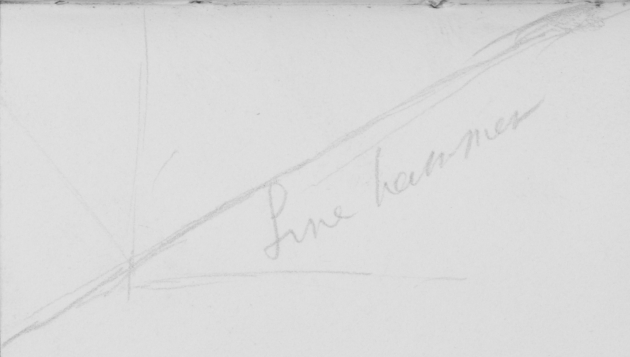
Line Hammer
[page 57a]
Huons Isd. named by D'Entrecasteaux1
Rota de la Beche with cliffs of raised coral2
Dillons account of Perouse — Mannicolo perfect encircling reef3 SE of Radack
1 Antoine Raymond Joseph de Bruni d'Entrecasteaux (1739-93), French navigator who explored the Australian coast in 1792.
2 De la Beche 1831, p. 142: 'the isle of Rota; where corals, resembling those now found in the neighbouring seas, occur in cliffs.' Darwin referred to the same page on the IBC.
3 Dillon 1829.
[page 58a]
many reefs

30-40 60 10 S
P. Journal
Craters. Corals. on Panama coast = Rodriguez1 =
Much quartz rock — [Graywacke] & Slate Staten Land
1 A volcanic island 550km north-east of Mauritius with an encircling coral reef. Cited in Coral reefs 2d ed., p. 242.
[page 59a]
Sandstone & S Shetland
Mr. Seales — Museum1
Jasper & quartzose rocks vertical strata of gypsum
Limestone from Sandy Bay
Prosperous Bay Gregories Valley — [Voluta & crystallised] Limestones
1 Robert Francis Seale (1791-1839), locally born geologist, who had a museum on St. Helena. See Chancellor 1990. Seale is mentioned below in the Geological diary CUL-DAR38.920-935, a 12 September [1838] letter, CCD2:103 and in Volcanic islands, pp. 75, 77, 85, 89-91. These notes and all the following entries on p. 59a to the start of p. 62a are a response to reading Seale 1834.
[page 60a]
Buccinum vel Helix dextra near summit of
Flagstaff Hill 190 0 ft. high — Bencoolen plain 1500 1576 ft —
Bone of Diomedea exulans?1 3-100 ft below
surface Prosperous Bay,
in a [Quarry] 14 ft deep egg
1 The wandering albatross.
[page 61a]
Most of hill quartz veins!
Phonolites & porphyries [rocks?]
Layers of Salt with Sulph of Lime in Turk's Cap Bay
Limestone principally from Sandy Bay. — Oolitic1 Limestone Flagstaff Hill
1 Composed of tiny balls of lime.
[page 62a]
Limestone hills, from Lots wife to the sea
Account of Ascension
Salt & Gypsum incrustations
Limestone — Fernando Noronha — geology [precious nonsense],
[page 63a]
not truly volcanic because no scoriae!! (Yet we have seen amygdaloid)
The peak he calls a greenstone composed of Feldspar Quartz & Hornblende!!
is it so? trash!!! the quartz the great [compose]
[page 64a]
embedded siliceous schist !!!!!
[Binary] granite in the [South] Shetlands
There are vast blocks of granite in Kemp Bay
appears to be NW & SE traversing from
[page 65a]
the Lion's Head appearing abundantly in Turk's Bay
Thursday [5 May 1836] Rode on Elephant to between R. Rempant & house — (N.B. more than 18ft water between reef & land at Flack ) —
Elephant noiseless — charming country mango avenues, nice
[page 66a]
gardens. — Flat plain covered with Coral, two lumps — which one must have formed islands on reefs, & such a one exists — (1)
about 98 ft high, circular, 20 above sea, strata, inclined at ∠ 8 lowest ½ coarse sand, largely stratified, upper half
[page 67a]
coarser, softer & containing great rounded rocks of Basalt, much rounded coral. part of which partly growing; 2 astrea & the [fine]
Keeling kind: & the 2d species of do Isld ? branched Madrepore1
From [illeg] [partly]
1 Specimen not in spirits 3634 'Branching Millepora, part of it encrusting a tubiform shell.' Zoology notes, p. 419, and note on p. 308.
[page 68a blank]
[page 69a blank]
[page 70a]
[nearly] surface of reef
Here we have proof of foundation of reef agreement of blocks & growing coral—
Shores Basaltic much [illeg] Corallina but not coral ?? —
[page 71a]
Reef in parts dry — Here more astrea because more sea: — other [patch] dipping nearly 18º — water worn, same constitution 200 yards inland
[page 72a]
N B Grand quaqua versal dip on all the West side; certainly distinct craters on the Isld. —
Mr Lloyd1 on the reef 5 miles from the shore; all deep
1 John Augustus Lloyd (1800-54), civil engineer and surveyor. Surveyor-General, Mauritius, 1831-49.
[page 73a]
water between? —
Patch of rather coarse Tosca rock on Lava. very cellular subaerial —
Spring? 200 ft above the sea —؟no trace of organic remains —
[page 74a]
Very little coral on coast of Panama
Capital roads —
Mimosa hedges, Sugar cane, prosperity —
Indian population snow white beards
Coast of Guinea?
Coral? —
[page 75a]
Both, Dyne & Radcliff say that the coral grows highest & most solid & apparently more abundantly on windward side
Reef off grand Port, so high that record to seaward —
[page 76a]
Coral islets

2 to 3 ft water
deep water [outside], surface rather smooth with Corallina —
Excepting where main channel for fresh water 2-4 ft of depth. —
[page 77a]
Reef very seldom attached to shore — Frequently in bites
small reef —
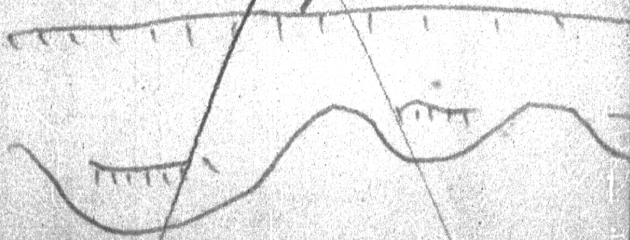
I do not understand this —
[page 78a]
Corals very different out & inside reef —
Channel seldom more than a few feet deep can wade outside At Grand Port, at Low water spring tides several ft above high
[page 79a]
water perhaps whole reef elevated
Mrs Power1 thinks that reef that [craters] [open] towards the grand hill?
Miserable [quarrels] between French & English
1 Mrs Power was a resident of Port Louis, Mauritius. Possibly the wife of Colonel James Power, Royal Artillery. She is also mentioned in the Red notebook, p. 17: 'Mrs Power at Port Louis talked of the extraordinary freshness of the streams of Lava in Ascencion known to be inactive 300 years?' See also a reference to a Dr Power of Mauritius in Descent 1: 335.
[page 80a]
Hindoo convicts, most extraordinary white beards black as negros plenty of intellect
Negroes state, poor people
Prosperity of English
governmentroads, contrast to Bourbon
[page 81a]
Sailed 9th [May 1836] —
[page 82a blank]
[page 83a blank]
[page 84a blank]
[page 85a blank]
[page 86a blank]
[page 87a blank]
[page 88a blank]
[page 89a blank]
[page 90a blank]
[page 91a blank]
[page 92a blank]
[back cover]
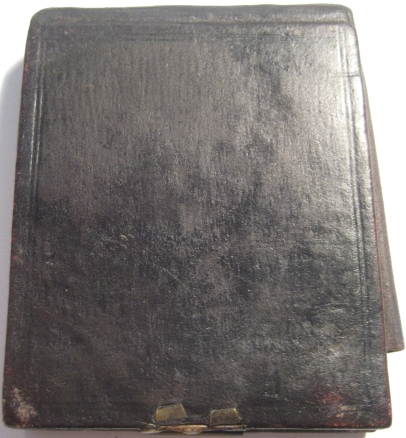
[inside back cover]
12 of the little [Quires] from the Captain
Blackheath 3411 Nr 1 Wolgan Capita
[pages 1b-2b excised]
[page 3b]
Paper — Chaffers1
Mr Dring2
Capt King
Bathurst
Mica Slate Trappean Rocks
Mr Blaxland3
Van Diemens Land
1 Edward Main Chaffer, Master on the Beagle.
2 John Edward Dring acting Purser on the Beagle.
3 Probably Gregory Blaxland (1778-1853) or John Blaxland (1769-1845), wealthy landowners and merchants in Australia.
[page 4b]
[Mr] Dring — Tobacco = B Soap
Dollars changed
Inkstand
Pencils — Blotting Paper —
Writing Paper — Portfolio?
Bramah Pens Common do
German Books: Spelling Dict:
Taylor — Boot-maker
Dentist —
[page 5b]
Peppermint — Hops
Carb of Soda & Magnesia = Laudanum Lozenges
½ oz Tinct Term. [Muriaticæ]
Lavander water —
Truss—
Second Penknife
[page 6b]
Mr Th Walker1
James Mr Clay —
Mr Bennet
Mr Dring — Tobacco & Soap
[Tooth] Dr Jennerat
Valparaiso Letters
1 James Walker (1784-1856), former army officer and owner of Wallerawang.
[page 7b]
Inkstand Taylor
Fools cap - Paper
Take size
Tooth-Brushes
Pill Boxes
Bramah pens
[page 8b]
2 Lb of common Soap & Tobacco
Textual notes to the Sydney notebook
[IFC] 1.3.] Down House number, not transcribed.
88202323] English Heritage number, not transcribed.
14] added by Nora Barlow, pencil, not transcribed.
[37a] R. Macquarie just flowing] added heavy pencil.
[IBC] Blackheath...No 1] written perpendicular to the spine in left margin.
Wolgan Capita] written upside down from other entries on page.
[3b] Capt King...Land] written upside down from other entries on page.
[The Beagle field notebook identifiers were re-set in January 2021 meaning the page counters were reset to 0. At that time this notebook had 10176 visits.]
 REVISION HISTORY: Scanned by Historic England. Transcribed by Gordon Chancellor, transcription typed and checked against the microfilm by Kees Rookmaaker, corrections by Chancellor 4.2007. Edited by John van Wyhe Corrected against the manuscript by Chancellor 15.11.2007. Corrected against colour photographs and microfilm by van Wyhe 8.2008. Transcription revised and edited by John van Wyhe 10-12.2008, 2024. RN12
REVISION HISTORY: Scanned by Historic England. Transcribed by Gordon Chancellor, transcription typed and checked against the microfilm by Kees Rookmaaker, corrections by Chancellor 4.2007. Edited by John van Wyhe Corrected against the manuscript by Chancellor 15.11.2007. Corrected against colour photographs and microfilm by van Wyhe 8.2008. Transcription revised and edited by John van Wyhe 10-12.2008, 2024. RN12

 like Mica Slate in Gneiss at Rio —
like Mica Slate in Gneiss at Rio —  heads like arm of sea, appears quite out of proportion to little streams in great fissures cleared by the sea — It is an immense Sandstone formation: —
heads like arm of sea, appears quite out of proportion to little streams in great fissures cleared by the sea — It is an immense Sandstone formation: —  notches at head
notches at head  gravel terrace. same class of country to Cox's river. — Open woodland. almost all
gravel terrace. same class of country to Cox's river. — Open woodland. almost all 



